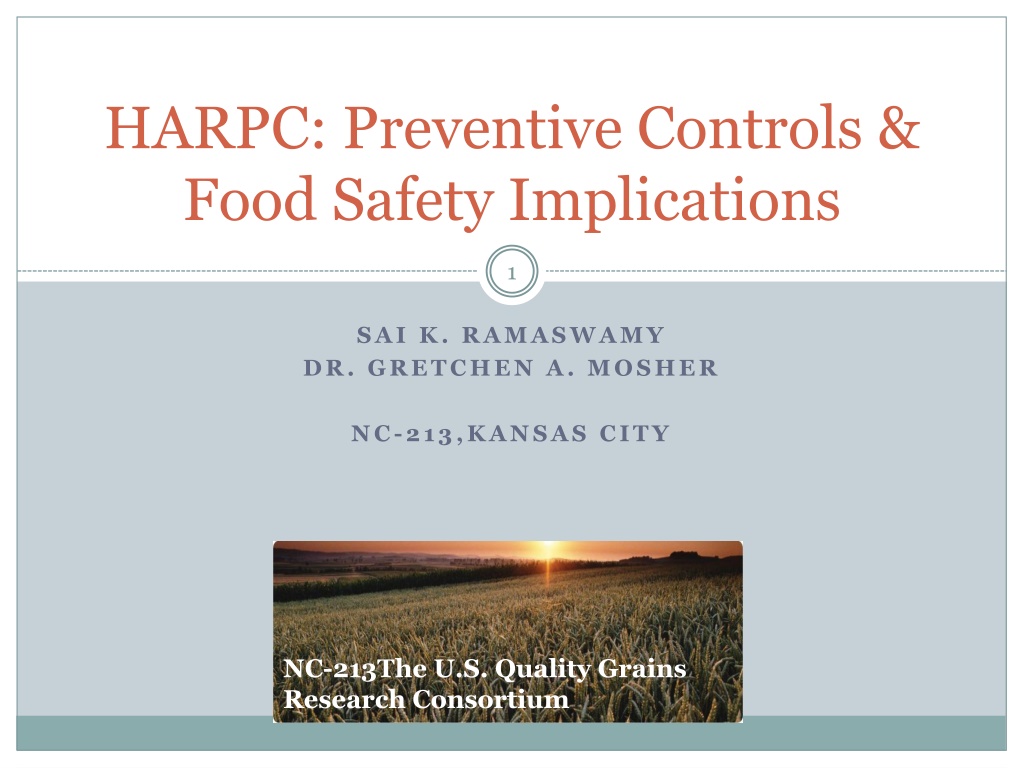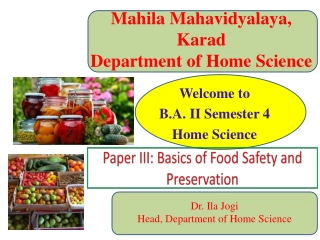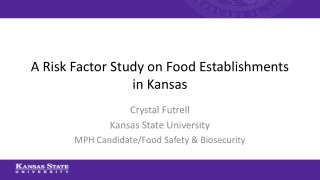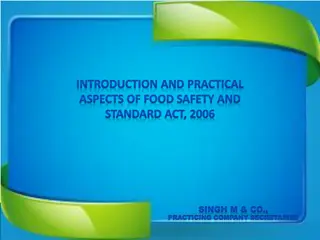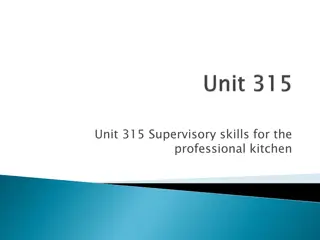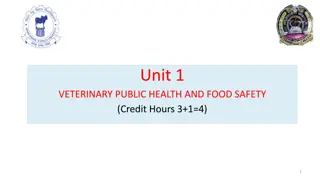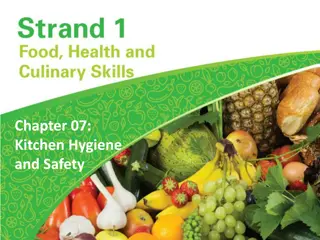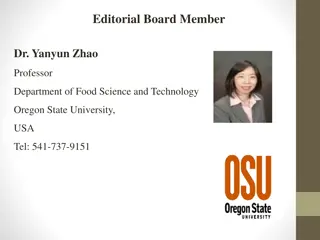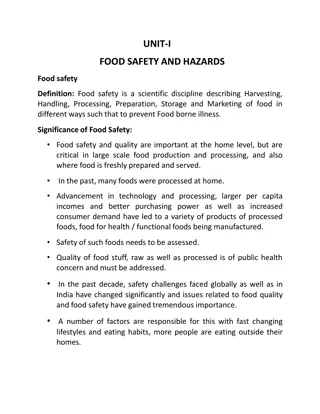Understanding HARPC and Its Food Safety Implications
The implementation of HARPC (Hazard Analysis and Risk-Based Preventive Controls) under the Food Safety Modernization Act (FSMA) represents a significant shift towards preventive measures in ensuring food safety. This reform impacts various stakeholders in the food industry, emphasizing the identification, evaluation, and mitigation of hazards. Unlike traditional methods like HACCP, HARPC focuses on preventive controls and requires qualified teams for effective implementation.
Download Presentation

Please find below an Image/Link to download the presentation.
The content on the website is provided AS IS for your information and personal use only. It may not be sold, licensed, or shared on other websites without obtaining consent from the author. Download presentation by click this link. If you encounter any issues during the download, it is possible that the publisher has removed the file from their server.
E N D
Presentation Transcript
HARPC: Preventive Controls & Food Safety Implications 1 SAI K. RAMASWAMY DR. GRETCHEN A. MOSHER NC-213,KANSAS CITY NC-213The U.S. Quality Grains Research Consortium
Food Safety Modernization Act (FSMA) 2 Most sweeping food safety reform: signed 2011 34 sections already enforced , 7 sections in rulemaking Wide impact- Farmers to Grain handlers to Processors to Importers Prevention rather than reaction
Good Manufacturing Practices (GMPs) (Pre-FSMA) 3 Systematic program to ensure food products meet safety, quality & legal requirements HACCP (Hazard Analysis and Critical Control Point) one such popular program Focus on managing critical controls to prevent, eliminate or reduce hazards Mostly a voluntary program
GMPs - post FSMA 4 Same goal different approach to handle safety, quality & legal requirements Identify hazards and controls measures + Risks associated with the hazards Required to implement Hazard Analysis and Risk-Based Preventive Controls ( Harp sea ) Mandatory for many of food & grain handling facilities registered with FDA
HARPC (Harp sea) 5 Preventive Controls- Section 103 of FSMA For Human Food For Animal food Intentional adulteration ( not addressed by HARPC) Different from HACCP despite common concepts (HACCP subset of HARPC) Applies to all facilities that process, pack or hold food and feed E.g.: Grain Elevators
HARPC- Key Elements 6 Identify & evaluate hazards Create programs/procedures to mitigate or prevent hazards Develop methods to effectively monitor preventive controls Maintain records of monitoring Specify corrective measures in case of issues with preventive controls Re-analyze
HACCP Vs. HARPC 7 HARPC HACCP US standard Worldwide standard Applies to a wide variety of food products Applies to FDA regulated products Focus on control steps Preventive programs Requires qualifies team Needs qualified individual
HACCP Vs. HARPC Compliance 8 HARPC HACCP Mandatory for all facilities requiring FDA registration Voluntary across most food industry Mandatory for certain foods like seafood, juice, meat and poultry Exemptions for FDA mandatory HACCP programs
GMPs at Grain Elevators 9 Currently voluntary Mandatory to maintain proper records & register with FDA for traceability Implementing quality management to handle globalization and legislation risks Also using quality management as a tool to handle food safety as well as worker safety risks
Potential Risks at Grain Elevators 10 FSMA Business Quality Meeting customer requirements Prevent grain spoilage Product safety Biological Chemical Physical Allergens Radiological Financial Revenue loss Recovering preservation & storage costs Safety Personnel safety
Preventive Controls for Quality Risks 11 Standardize operation Improve inventory management Minimizing variance by monitoring and measuring Empower employees
Quality Management & Preventive Control 12 QMS processes facilitate: Documentation of work tasks for control and consistency Clear statement of decision making responsibilities Provides statistical targets for quality traits Improvement of management processes for inventory Established methods for problem solving and appropriate corrective actions
HARPC & Quality Management 13 Identify & evaluate hazards Plan Create programs to mitigate/prevent hazards and develop preventive controls Do Check Monitor and maintain records Apply corrective measures when needed and re-analyze Act
Recommendations 14 Grain elevators can manage grain quality and product safety with QMS QMS can help manage inventory and help decision making related to : Preservation methods Storage options Blending Shipping details
Recommendations cont.. 15 Grain elevators implementing QMS are better suited to handle changes due to new legislation QMS focus on control, consistency, and reproducibility helpful in hazard management part of HARPC program QMS could assist in managing risk of intentional adulteration and keeping the facility secure
Questions 16
Potential Risks at Grain Elevators 17 Quality Meeting customer requirements Prevent grain spoilage Product safety Financial Revenue loss Recovering preservation & storage costs Safety Personnel safety
